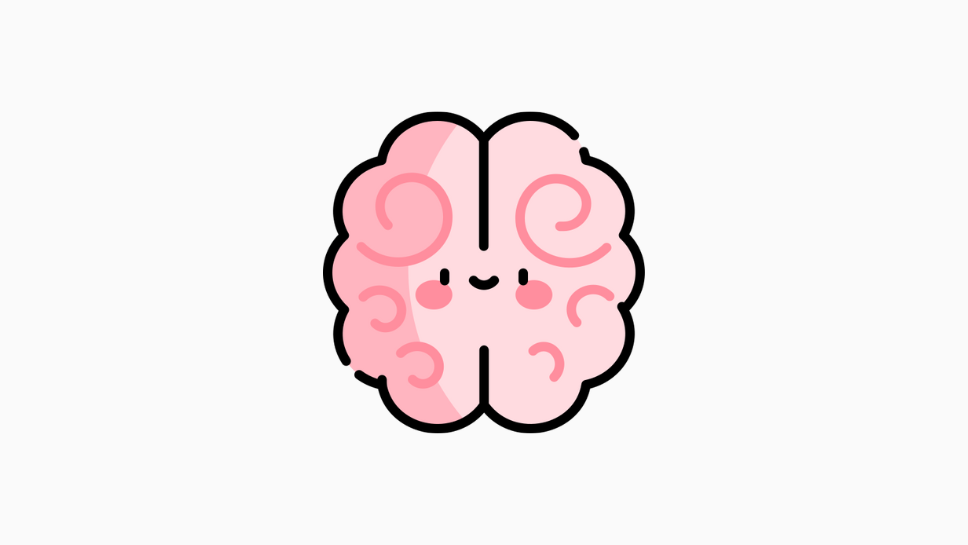Table of Contents
I’ve found a way to remember everything I read. And I want to show you how you can do the same.
Over the last few years I’ve read hundreds of books, listened to a bunch of podcasts, and consumed a whole ton of valuable content. But, the truth is, I can recall about 1% of it all. If that.
It genuinely pains me to think about all the brilliant ideas I’ve forgotten. All the useful advice I’ve failed to take action on. And all that time I spent learning stuff just for it to go to waste.
It’s super frustrating.
Like, just imagine how great our life would be if we could find a way to tap into our full potential, recall everything we learn and organise our life for maximum clarity, productivity and insight.
It sounds too good to be true.
But, I think I’ve found a way.
🧠 The Second Brain
The idea is that our brain can only store a few thoughts at any one time. And we’re just not designed to keep all this information in our head.
Basically, our brain is for having ideas, not holding them.
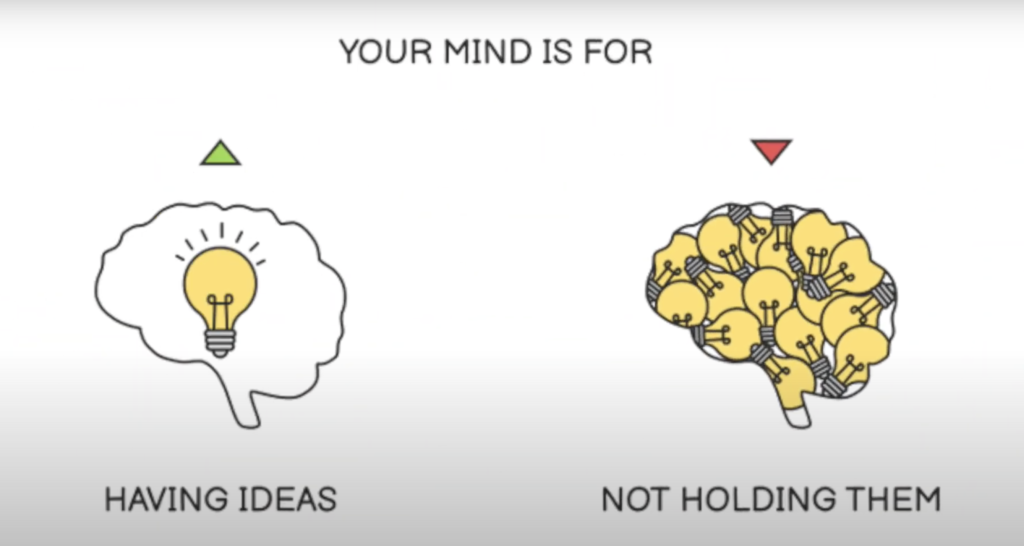
So, we need some sort of system to outsource, organise and manage all this information otherwise we’re just going to forget it. And this system is ‘the second brain’.
In short, it’s a way of freeing up our brain’s resources by storing all of our notes, ideas, inspiration and insights into an external digital brain that we can refer to and build upon whenever we want. Every brilliant thought we’ve ever had, every life-changing fact we’ve read, and every inspiring bit of content we’ve stumbled across is saved all in one place. Forever.
It’s honestly an absolute game-changer and I wish I’d known about it years ago.
So, if you’re someone that wants to have better ideas, be more productive, and reduce mental stress there are few better things that you could do than build your very own second brain.
🏗️ Building the Second Brain: The CODE Method
The four key steps in building our second brain is the CODE method, which stands for Capture, Organise, Distil, and Express. So, this is what we’ll use to help us manage and make sense of all the information we come across on a daily basis.
But, before we can dive into that, we need some sort of app to begin building our second brain in.
Now, I’ve tried literally every app out there, from Notion to Obsidian and beyond, and I can honestly tell you it doesn’t matter what app you use. In fact, I’ve now settled on keeping things super simple by using Apple Notes
I like Apple Notes because of its clean and simple feel. It allows me to quickly write notes, I can access those notes on any device, and there’s just zero faff with it.
But if you prefer some other note-taking app then this system will work fine on that too. Don’t overthink it.
If you do eventually decide Notion is your go to note-taking app for your second brain you can download my FREE second-brain template for Notion below:
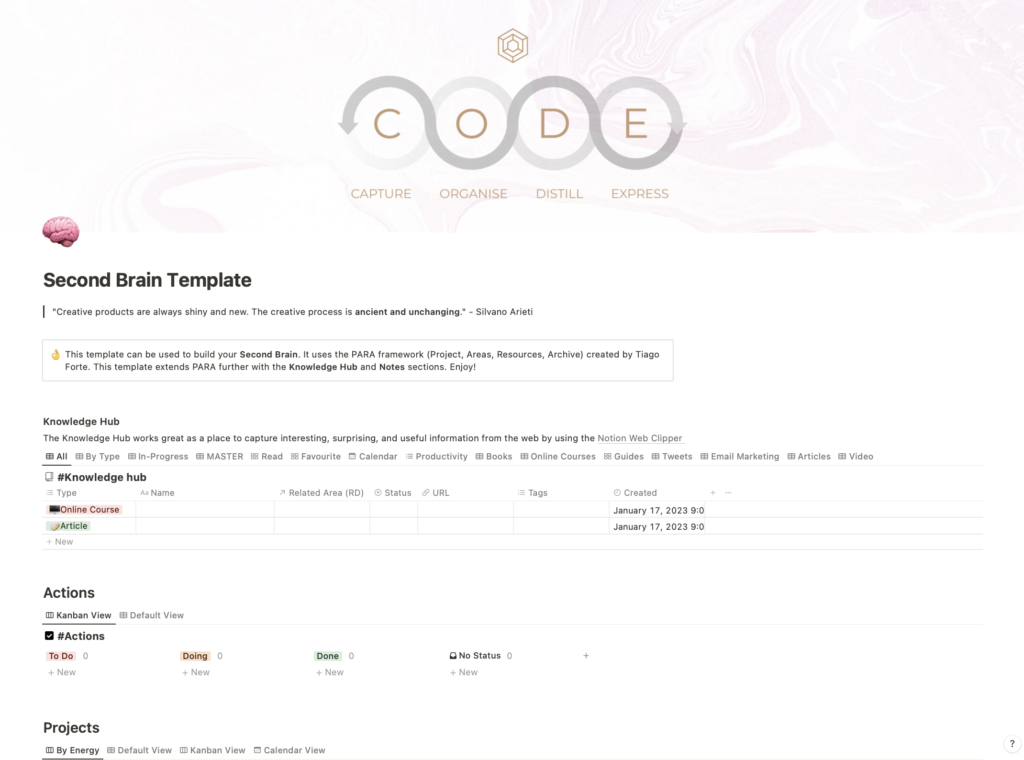
Okay, now we’ve got our app, let’s now dive into the CODE method.
🤲 Capture
First, we’ve got ‘capture’.
Basically, our mind has a limited working memory. We can’t hold all our best ideas and process all the information we come across every day. So, having way to capture all this knowledge helps to reduce mental effort and stress by freeing up our brain from having to remember everything.
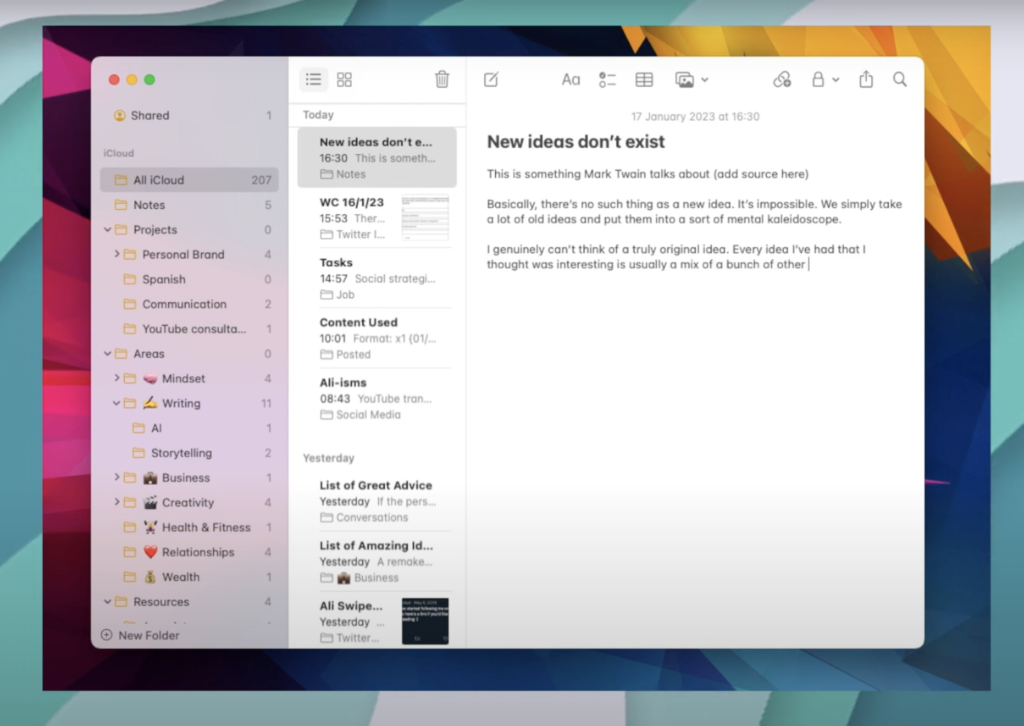
The other benefit of capturing our thoughts in one place is down to something called ‘borrowed creativity’. The idea here is that there are no new ideas in the world and all creative output is just a remix of constant creative input. So, whenever we see people doing great things and having great ideas, it’s almost always the end result of storing, processing, and connecting the ideas of other people.
If you’re not too sure what information to capture, the rule here is to find stuff that resonates with us. Whether it’s something we read, an interesting quote, a thought we had, or a conversation with a friend. Any insight that resontates with us should be written down.
If you’re struggling to find infomration that resonates with you, I highly recommend improving your ‘information diet’, as David Perell calls it. This means only following people on Twitter that actually share decent insights, reading books with high quality information, and interacting with people that genuinely level up your life.
How to Capture Information
Whenever I’m read to capture something, whether I’m on my phone or laptop, I’ll open Apple Notes and create a new note. It doesn’t matter how pretty the note is. All I care about at this stage is getting the thought written down on the page. We can always tidy it up later.
Now, there are some ocassions where it’s possible to ‘automate’ this process without having to write everything ourselves. Here are a few examples:
1. Books Notes – If I’m reading a book on my iPad, I can highlight the quotes that resonate with me and share those notes directly to my email. From there, it’s really easy just to copy all those quotes directly into a new Apple Note.
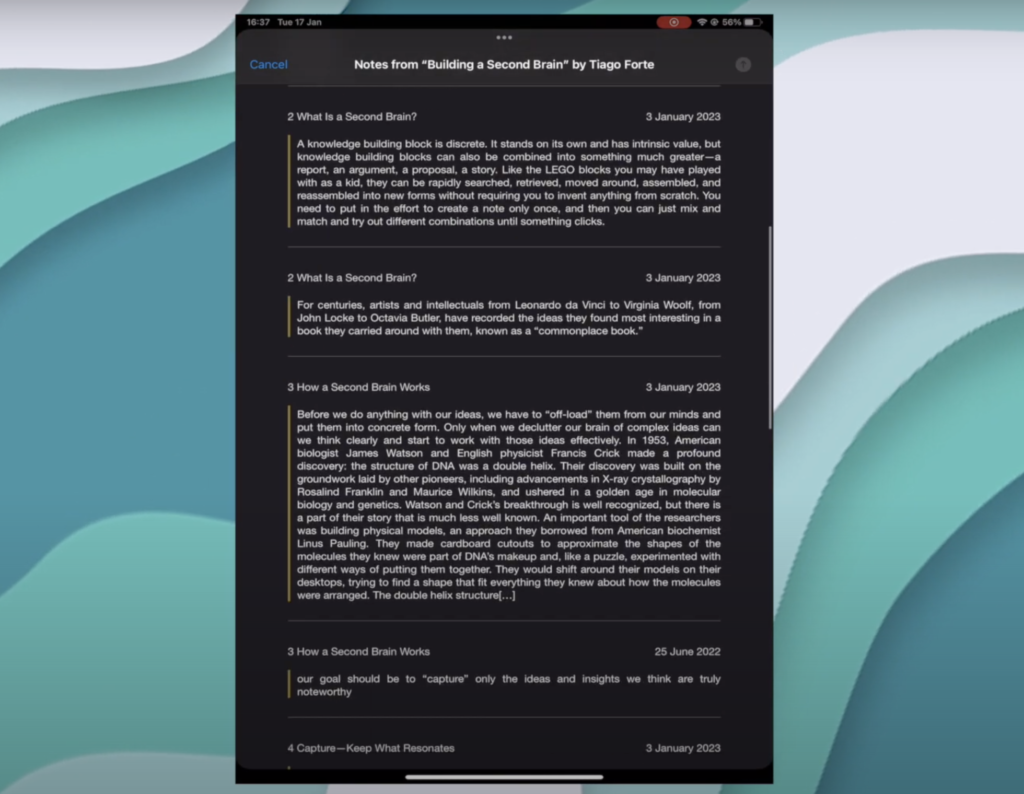
2. Tweets – If I’m scrolling twitter and like a tweet, I can share that tweet directly into a new Apple Note and leave a few of my thoughts.
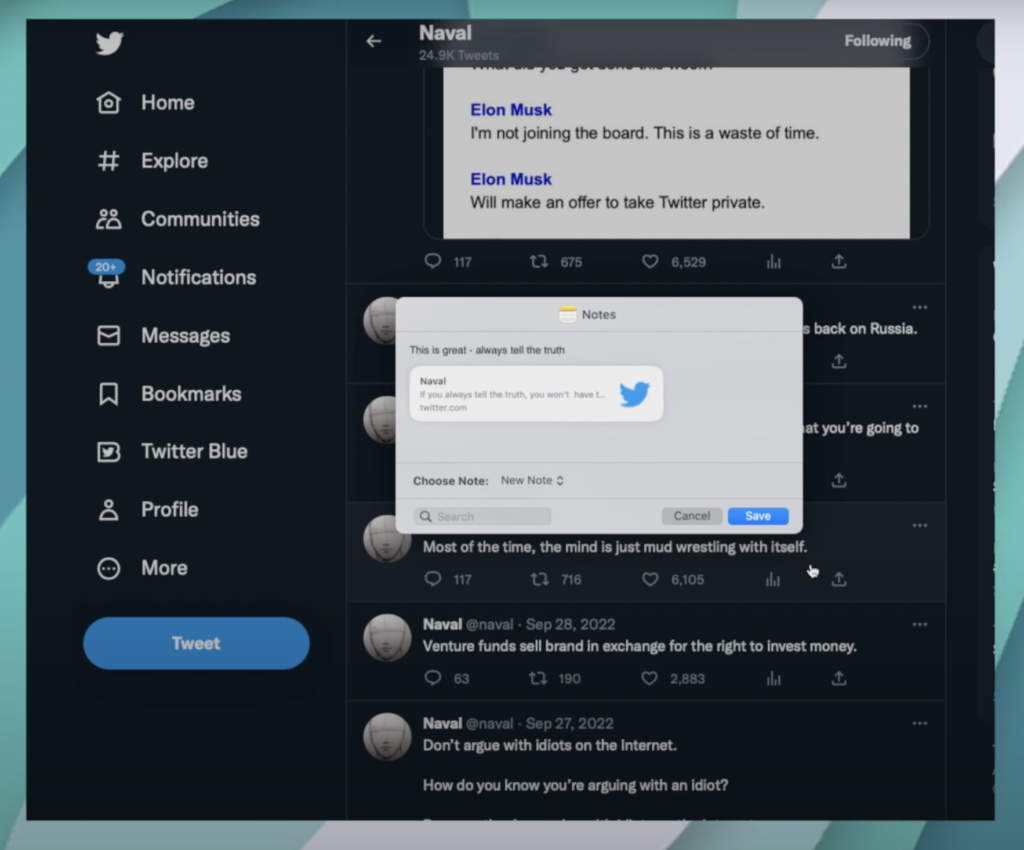
3. Articles – If I’m reading an article I like, I can save it directly into Apple Notes from my browser, where I can either share my thoughts immediately or check the article out later when I have more time.

To be honest, you’ll probably find a capture process that works best for you. Like, you’ll notice that some apps have slightly better integrations – like you can use Readwise to sync your kindle highlights with Notion – but I recommend keeping things simple to begin with.
📦 Organise
Right, so now we’ve captured some notes, we can begin organising them.
The principle behind this is that we’re always working on a bunch of projects and improving different areas of our life at any one time. If we’ve ever tried to focus solely on one project or improve one area of our life from start to finish, it’s an extremely heavy lift. It takes a lot of mental effort and sacrifice to block off an entire week or month to get that thing done.
So, organising our notes into the different things we’re thinking about and working on helps promote a ‘slow burn’, where our intellectual work and effort is spread out over time.
This means we shouldn’t plan to do hard work all at once, as that will be super stressful and overwhelming. Instead, we should spread our focus and efforts into several projects, where we’re gradually working on each of them.
Then, when it’s time to write our essay, design our website, or share our thoughts, we’re ‘starting from abundance’ as we’ve been thinking about it over the last few weeks, months, or years anyway. We’re never short of ideas because we’ve been collecting and organising them for a while.
The PARA Framework
Okay, so what does this look like in practice?
Well, I use something called the PARA framework, which stands for Projects, Areas, Resources, and Archive. And this describes exactly how my notes are organised in Apple Notes.
First, Projects. These are the folders containing my highest level of notes and they’re basically any note linked to a goal that I’m trying to achieve with a fixed deadline. For example, I may have notes linked to a project called ‘write a blog post on X’ or ‘create website mockup’ or anything along those lines. The point is we want our notes to be as actionable as possible, so projects force us to create notes that will genuinely help us achieve our short-term goals.
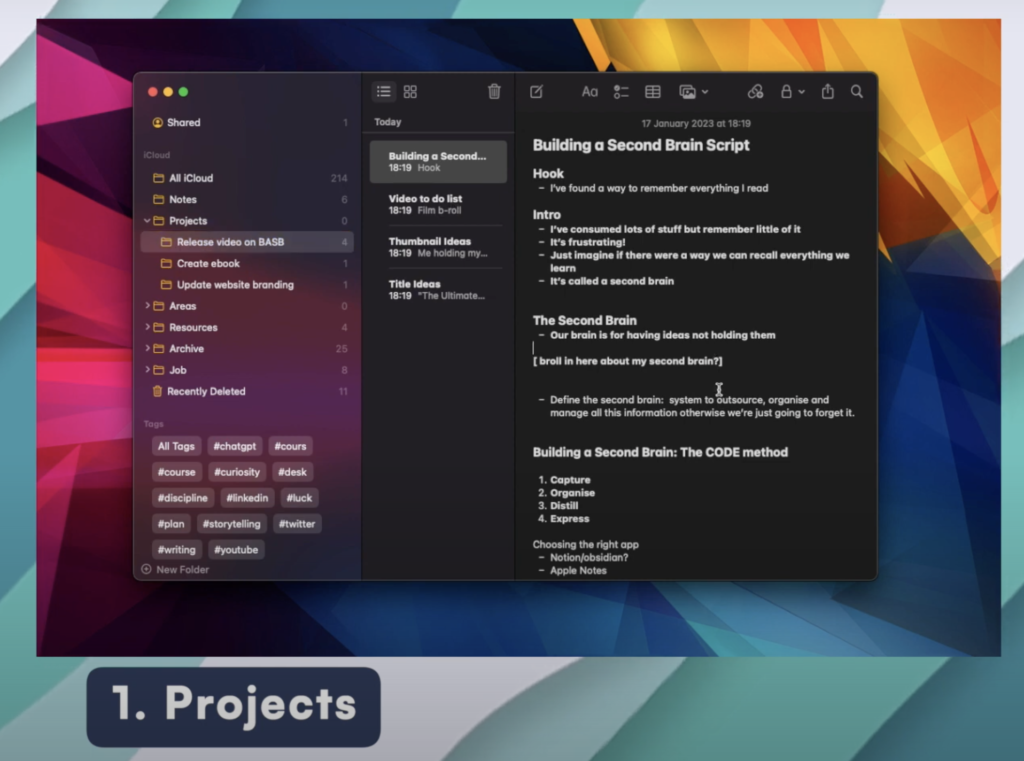
Second, areas. These folders are far broader containing notes on broader spheres of activity we want to maintain over time. They don’t typically have a deadline, but they’re areas of our life we want to improve in. So, maybe things like ‘health’, ‘finances’, ‘writing’ and things like that.
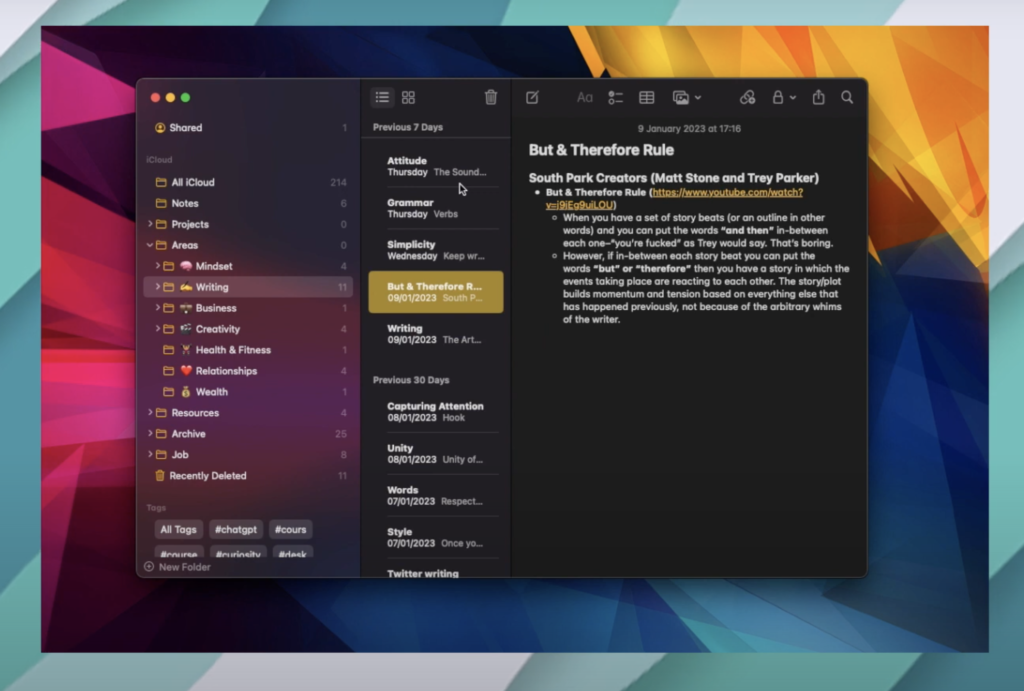
Third, Resources. Now, for me at least, a ‘resource’ is anything that isn’t exactly a note or something I want to learn, but important snippets of information I want to keep safe. So, this could be stuff like interesting anecdotes, bookings, and personal goal setting.
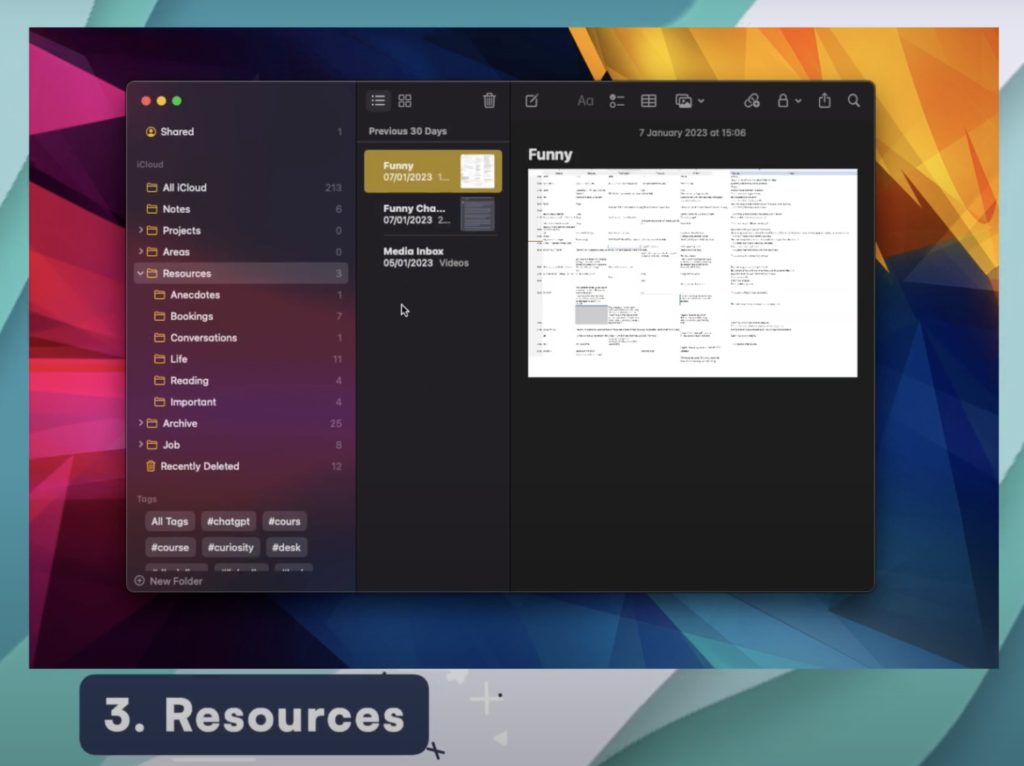
Then, finally, archive. Basically, any inactive note from the other three category can be dumped here. So, if you’re no longer committed to a certain area you can archive it or if there’s a resource that’s no longer needed it can be put in there too.
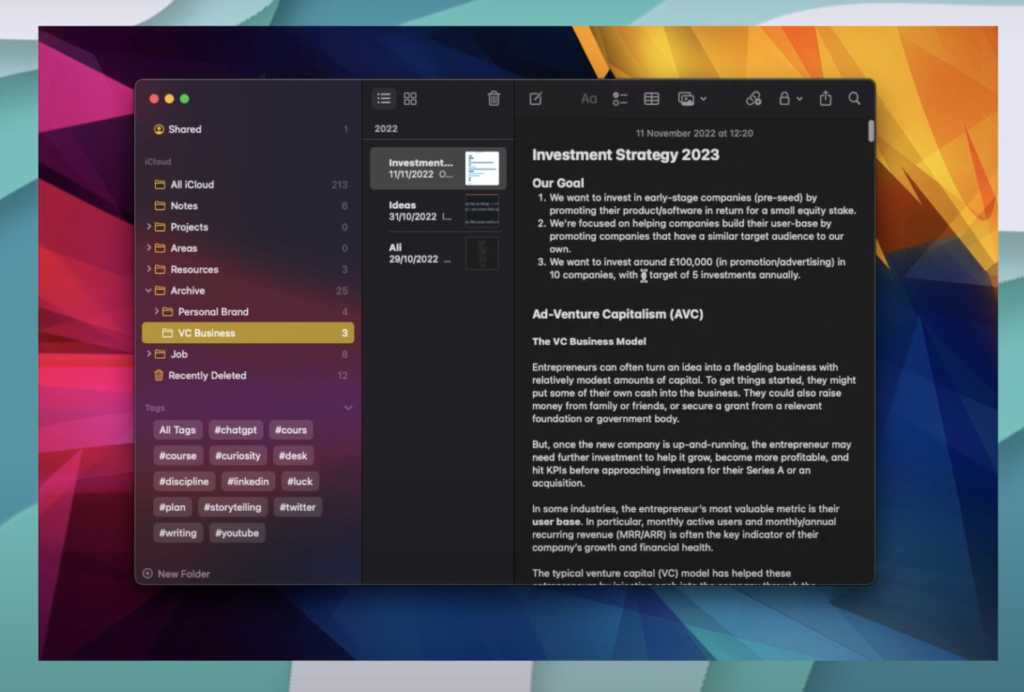
Again, you may find a better way of doing it, but this is what works for me.
🤏 Distil
At this point our second brain is shaping up nicely. We’ve captured a bunch of useful information and organised it. But, now we need to begin doing something with the notes we’ve created, which leads us on to distil.
Now, all this means is taking all the info we’ve written and turning it into something useful. And our main tool for doing that is something called ‘progressive summarisation’.
In short, we want to make life easier for our future self by breaking each note down into its most essential elements. And there’s a three step process I use for doing this.
- Delete – First, delete anything that isn’t interesting, surprising, or really doesn’t resonate with us. We only want to keep stuff that’s useful. Or, if a note is getting too big for whatever reason, we can usuall break into 2 or more different notes.
- Highlight – Second, highlight or bold the main points in the note. This won’t help us remember the informtion, but it’s good for flagging all the important stuff if we scan the note quickly at a later date.
- Summarise – Finally, summarise the entire note in our own words. So, every time we come back to the note we’ve got a super concise overview of what the note is about.
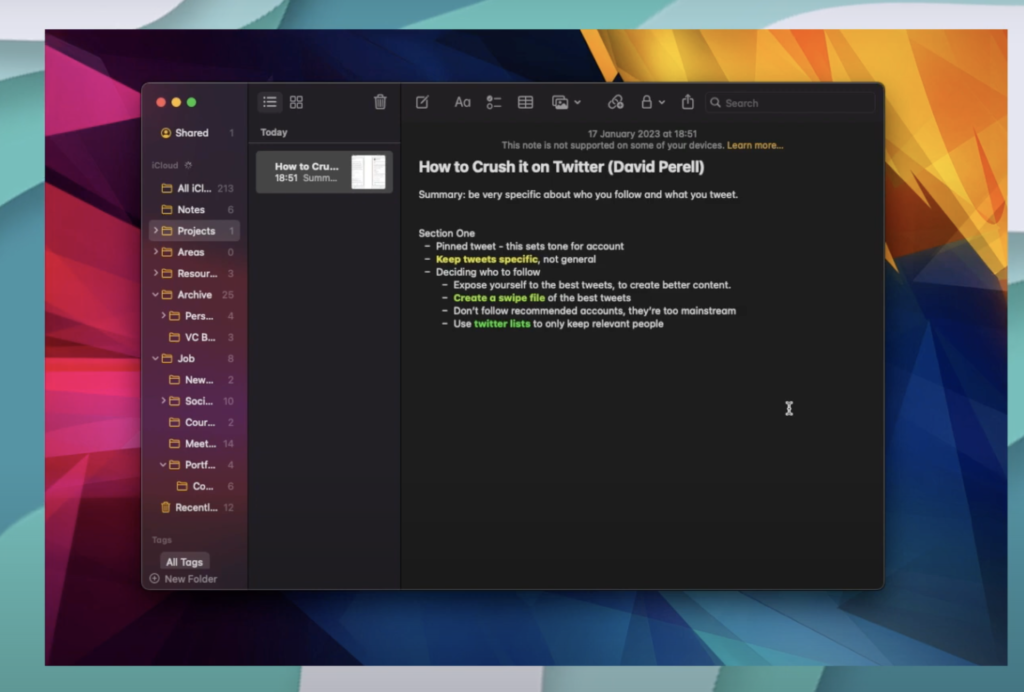
Don’t get too bogged down trying to do this for every note, but it is something I try to do for a note I visit often. And I also don’t typically do the whole three step process in one go. I usually highlight, summarise, and delete stuff at different times as I keep coming back to the note, so it’s gradually becoming more useful and concise.
🗣️ Express
The final, and perhaps most important, step is to express.
So, once we’ve captured and organised our ideas, we need to share them with the world in some way. This allows us to receive feedback, collaborate with others, and actually create something meaningful from all the info we’ve collected.
You see, without expressing our ideas, they’re essentially useless. So, it’s important to find a way of sharing our creativity with others.
For example, whenever I create a new YouTube video I usually have a set of notes on that topic already. And I’m in a constant process of recycling my ideas and sharing them with the world, receiving feedback on what I put out there, then improving the notes based on that feedback.
Like, I recently made a video on time management. This wasn’t a very difficult video to put together because over the last few months I’ve been collecting a ton of interesting articles, techniques and studies on time management. I didn’t have any intention about turning that stuff into a video, I just wanted to improve my own life. But, as I had all the information anyway, I decided I’d turn it into a video.
The fact I had captured, organised and distilled my thoughts on time management meant it was incredibly easy to express those ideas as a YouTube video.
That’s about it. If you want to find out more about building a second brain there’s a load of great free resources on Tiago Forte’s website that you should 100% check out.

